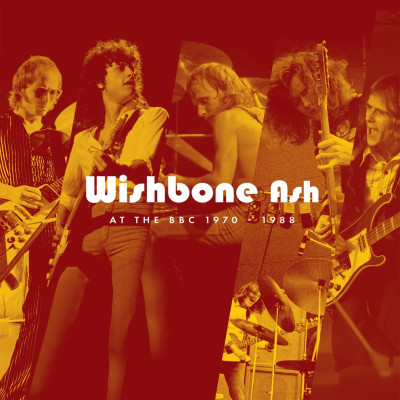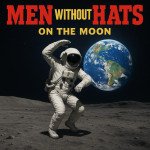Share the post "Book review: THE DEVELOPMENT OF LARGE ROCK SOUND SYSTEMS, VOLUME 4 by Chris Hewitt"

Dandelion Books [Publication date 23.10.24]
You might imagine that this being Volume 4 of ‘The Development of Large Rock Sound Systems’, that there would be a natural chronology at play.
Not so, for having dealt with the history of the likes of WEM, Martin audio, RSD, Mitrex, Tasco, Turner Electronic Industries Limited, Colac Sound, Heil, Wigwam, Midas Europe system and innovators such as Jim Marshal, Bill Kelsey, Charlie Watkins etc, the author goes back to the rise of Pink Floyd to illustrate how their ambition to bring a studio sound in the live setting, led to innovative changes, and ushered in the notion of a rock show as art.
The 154 page A4 coffee table style soft back book is crammed full of unseen photos which cover gigs, events, mixing desks, full pa’s and various bands and PA personnel.
In short, it’s a cornucopia of the early 70’s rock era, which sometimes reads like random pages from a roadie’s diary.
It’s actually a well researched book which will doubtless interest audiophiles, sound engineers and Pink Floyd fans in general, but it’s a bit of a sprawl in need of a rigorous editor.
In short, the book lacks a proper intro, a basic index and a keener sense of chronology, let alone the fleeting problem of who is actually being credited for which quotes.
No matter, there is still much to enjoy, including the snapshots of the late innovative Pete Watts, Floyd’s road manager and sound man at Pompeii.
There’s also Chris Mitchie who toured the Allen & Heath desk and who gives the reader an insight into how Floyd differed from their contemporaries: “Pink Floyd has the best equipment, the best road crew and the best of everything.”
Then there road stalwarts like Mick Kluczinski and the famed Alan Parsons, who fell in line with the unusual Floyd practice of hiring: “The services of which studio engineer had worked on their latest album.”
This led to problems between: “an expert soundman and the role of road crews who until recently had been actively involved in the all round set up.”
The above is an example of an interesting angle which is barely pursued though anecdotes or otherwise.
Instead, there’s reflections by people like Andy Bereza – founder and designer of the Allen & Heath desk - and who more recently has built replicas of the original equipment with the author.
Bereza incidentally, comes up with same conclusion as the a previous quote, when he says: “In essence, management wanted to reproduce what was heard on the record.”
His desk incidentally became used at the Rainbow Theatre.
And as the book progresses with lavishly illustrated pages, we get Nick Mason’s brief insight into Floyd’s early career financial problems, as well as an un-credited archive interview from 1973 with Peter Watts about using the Quad system.
Watts makes the interesting assertion that: “The way the music is reproduced has itself an influence on the subsequent writing and desired ‘quality’ of the sound job.”
American John Edler Robison provides a more human perspective in a technical world, by outlining his own experiences when dealing with the Floyd set up.
There also an unrelated story about the GLC and The Who at Charlton which raises an ironic smile, and another un-credited piece on the Floyd set-up in 1967.
And as the book dives further into the technical detail of Floyd’s evolving equipment, we are told: “A Pink Floyd performance is more a site of pilgrimage than an ordinary concert.”
In fact it is contextualised as: “The 20th century version of the opera and ballet staging extravaganza of the 16th to 19th Centuries.”
And so to IES (International Entertainers Services) and their clients such as ELP, and tales of The Who with their Mavis Quad desk and a car battery (no spoilers).
There is also mentions of The Grateful Dead, Ritchie Blackmore and the Hollywood Festival in 1970.
The thing that binds together other recollections from mixer and designer Chris Quayle and tech Jeff Blenkinsopp, is the sense of spontaneity and an ability to think practically on their feet.
For example, asked if he knew about Hammond organs and whether he had a passport, Blenksinsopp soon found himself hired as a keyboard tech as a Floyd rehearsal.
In a later piece on designer Bill Kelsey, we learn of the way IES gear outshone competitors at the Buxton Festival, while employee Dave Hartstone noted that; ”The presence of studio technology in the live music industry was a factor that must have accelerated the development of mixing consoles.”
Effectively he reinforces the salient point that that glues together a detailed but poorly structured book.
That said, the ace in the pack is the David Bowie chapter, which illustrates how Bowie employed the same attention to detail and investment as Pink Floyd, to make the ‘Ziggy Stardust’ tour such a success.
The final 11 pages of photos of the Grateful Dead’s ‘wall of sound’ PA system is a reminder that this book is principally aimed at the technically minded, rather than being an analytical read.
That said, it’s still an enjoyable snapshot of the evolution of sound systems in rock music, and is the kind of guilty pleasure that offers enough in between the technical info to attract rock fans in general. ***½
Review by Pete Feenstra
Featured Artist: JOSH TAERK
Since early 2020 Josh has been entertaining us with exclusive monthly live sessions,
Check out videos here: https://www.facebook.com/getreadytorockradio
David Randall presents a weekly show on Get Ready to ROCK! Radio, Sundays at 22:00 GMT, repeated on Mondays and Fridays), when he invites listeners to ‘Assume The Position’. The show signposts forthcoming gigs and tours and latest additions at getreadytorock.com. First broadcast on 16 November 2025.
UK Blues Broadcaster of the Year (2020 and 2021 Finalist) Pete Feenstra presents his weekly Rock & Blues Show on Tuesday at 19:00 GMT as part of a five hour blues rock marathon “Tuesday is Bluesday at GRTR!”. The show is repeated on Wednesdays at 22:00, Fridays at 20:00). This 600th show was first broadcast on 18 November 2025
How to Listen Live?
Click the programming image at the top of the page (top right of page if using desktop)
Get Ready to ROCK! Radio is also in iTunes under Internet Radio/Classic Rock
Listen in via the Tunein app and search for “Get Ready to ROCK!” and save as favourite.
More information and links at our radio website where you can listen live or listen again to shows via the presenter pages: getreadytorockradio.com
Power Plays w/c 1 December 2025
We feature all the artists selected in this sequence in 2025.
Featured Albums w/c 1 December 2025
09:00-12:00 The Best of 2003 – 2025 (Melodic Rock)
12:00-13:00 The Best of 2003 – 2025 (Melodic Hard Rock)
14:00-16:00 The Best of 2003 – 2025 (Singer Songwriter)
Our occasional Newsletter signposts latest additions to the website(s). We also include a selection of recent top albums, based on GRTR! reviewer ratings. The newsletter is sent out a few times a year.
If you’d like to register to receive this occasional mailing please complete the form:
If using a smartphone/tablet please tap here or re-orientate your device
(Note that this registration is separate from site registration which allows you to leave comments and receive daily emails about new content. If you wish to register for this – in addition or separately – please click or tap here – for more information – the form is at the foot of each page. Please read our privacy policy when opting-in to receive emails.
Recent (last 30 days)
Share the post "Book review: THE DEVELOPMENT OF LARGE ROCK SOUND SYSTEMS, VOLUME 4 by Chris Hewitt"



























 PDF - you can delete unwanted sections
PDF - you can delete unwanted sections



































